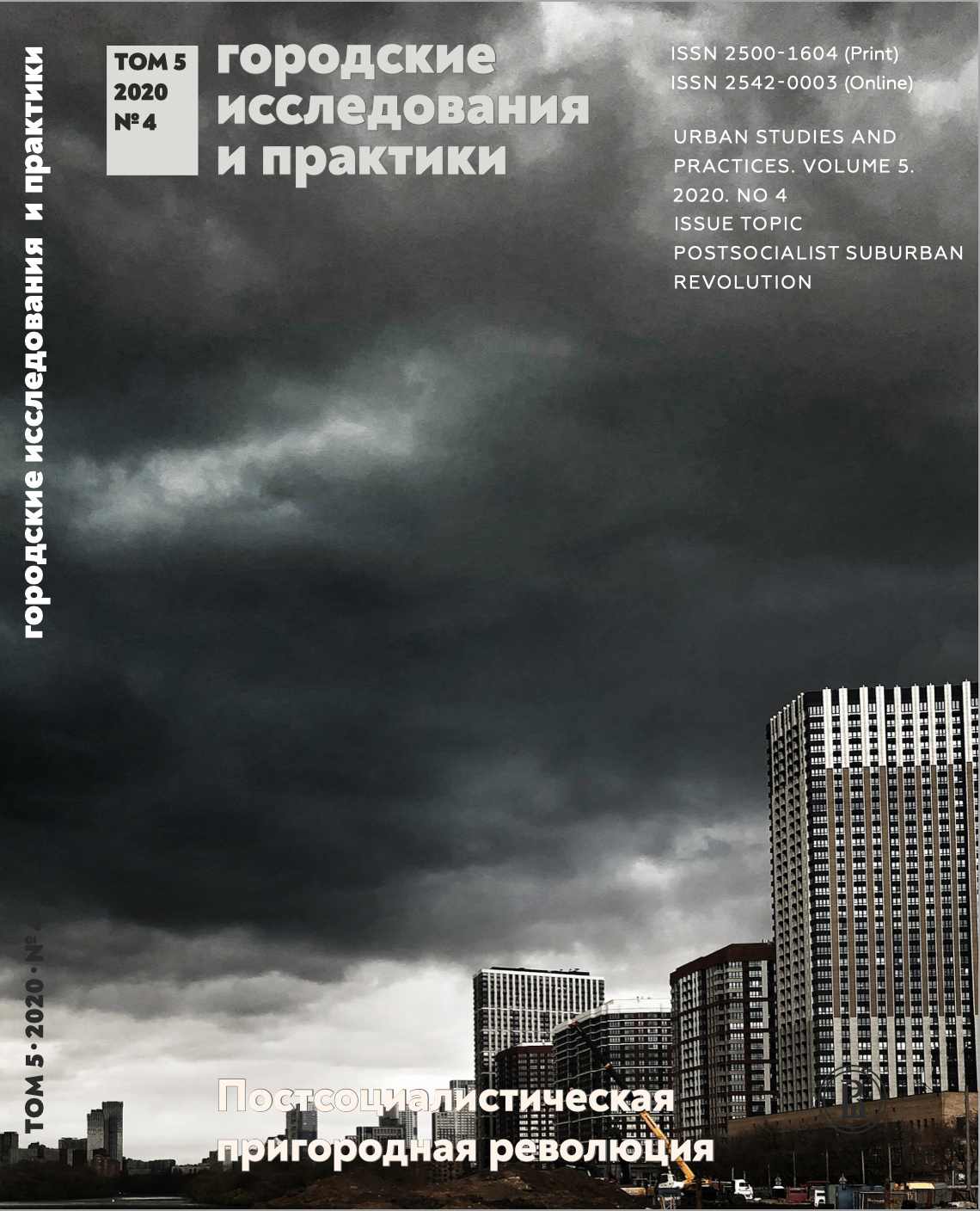The Main Directions of Urbanization in Khakassia in the Post-soviet Period
Abstract
This article studies the development of urbanization in the Republic of Khakassia from 1991 to 2017. The author analyzes the quantitative indicators of urbanization and considers the factors that influenced the size of urban population in the region. Using official statistical data, the features of the development of the urbanization process are identified. From 1989 to 2017, the urban population of Khakassia decreased by 9.7% compared to the average Russian decrease of 2.7%. However, Khakassia was not affected by the nationwide post-Soviet process of ruralization. The main factor in the decline in the urban population during this period was the transformation of urban settlements into rural ones, which was responsible for 80% of the losses of the urban population. Another significant factor was the natural decline in the population. Special attention is paid to the issue of urbanization of Khakass and the problems of their adaptation to the city. During this period, the share of Khakass in the urban population grew, while migration from villages was due to unemployment and low living standards. Urban life for the Khakass erases the boundaries between Khakass sub-ethnic groups is much faster than in villages. The main features and trends of the evolution of the urban settlement system in the republic are also discussed.
Downloads
References
Анайбан З. В. (2006) Степень адаптации и факторы адаптационного поведения основных этнических групп Республики Хакасия к новым условиям жизни (по материалам этносоциологического исследования): информационно-аналитический бюллетень No 3. М.: Институт востоковедения РАН.
Баранцева Н. А. (2011) Этносоциальные и этнодемографические процессы на юге Средней Сибири в конце XIX — конце ХХ вв. Абакан: Издательство ХГУ им. Н. Ф. Катанова.
Благосостояние городского населения Сибири: проблемы дифференциации (опыт социологического изучения) (1990) Новосибирск: Наука. Сибирское отделение.
Быстрицкая А. Ю., Шатохин М. В. (2015) Сравнительная характеристика уровня жизни городского и сельского населения // Вестник Курской государственной сельскохозяйственной академии. No 2. C. 20–21.
Гольц Г. А. (2002) Культура и экономика России за три века. XVIII–XX вв. Т. 1. Новосибирск: Сибирский хронограф.
Горин Н., Нещадин А. (2010) Тенденции трансформации системы городского расселения в России // Общество и экономика. No 12. С. 140–149.
Итоги Всероссийской переписи населения: в 14 т. Т. 1. М.: Статистика России, 2004.
Карачурина Л. (2013) Демографические трансформации городов постсоветской России // Региональные исследования народонаселения. No 3. С. 23–36.
Кискидосова Т. А. (2012) Повседневная жизнь горожан Енисейской губернии во второй половине ХIХ — начале ХХ века. Абакан: Журналист.
Коломак Е. А. (2015) Урбанистическая система Сибири и Дальнего Востока: эволюция, особенности, детерминанты // Интерэкспо ГЕО-Сибирь. Т. 3. No 1. С. 106–115.
Кривоногов В. П. (2011) Хакасы в начале XXI века: современные этнические процессы. Абакан: Хакасское книжное издательство.
Кышпанаков В. А. (1995) Население Хакасии: 1917–1990-е гг. Абакан: Издательство ХГУ им. Н. Ф. Катанова.
Лушникова О. Л. (2018) Социальная адаптация сельских мигрантов: теоретические и эмпирические аспекты исследования // Дискуссия. No 6. С. 48–59.
Нефедова Т. Г., Покровский Н. Е., Трейвиш А. И. (2015) Урбанизация, дезурбанизация и сельско-городские сообщества в условиях роста горизонтальной мобильности // Социологические исследования. No 12. С. 60–69.
Панарин С. А. (2005) Казахстан: города и урбанизация в межпереписной период (1989–1999) // Вестник Евразии. No 3. С. 48–70.
Славина Л. Н. (2007) Сельское население Восточной Сибири (1960–1980-е гг.). Красноярск: Красноярский гос. пед. ун-т им. В. П. Астафьева.

